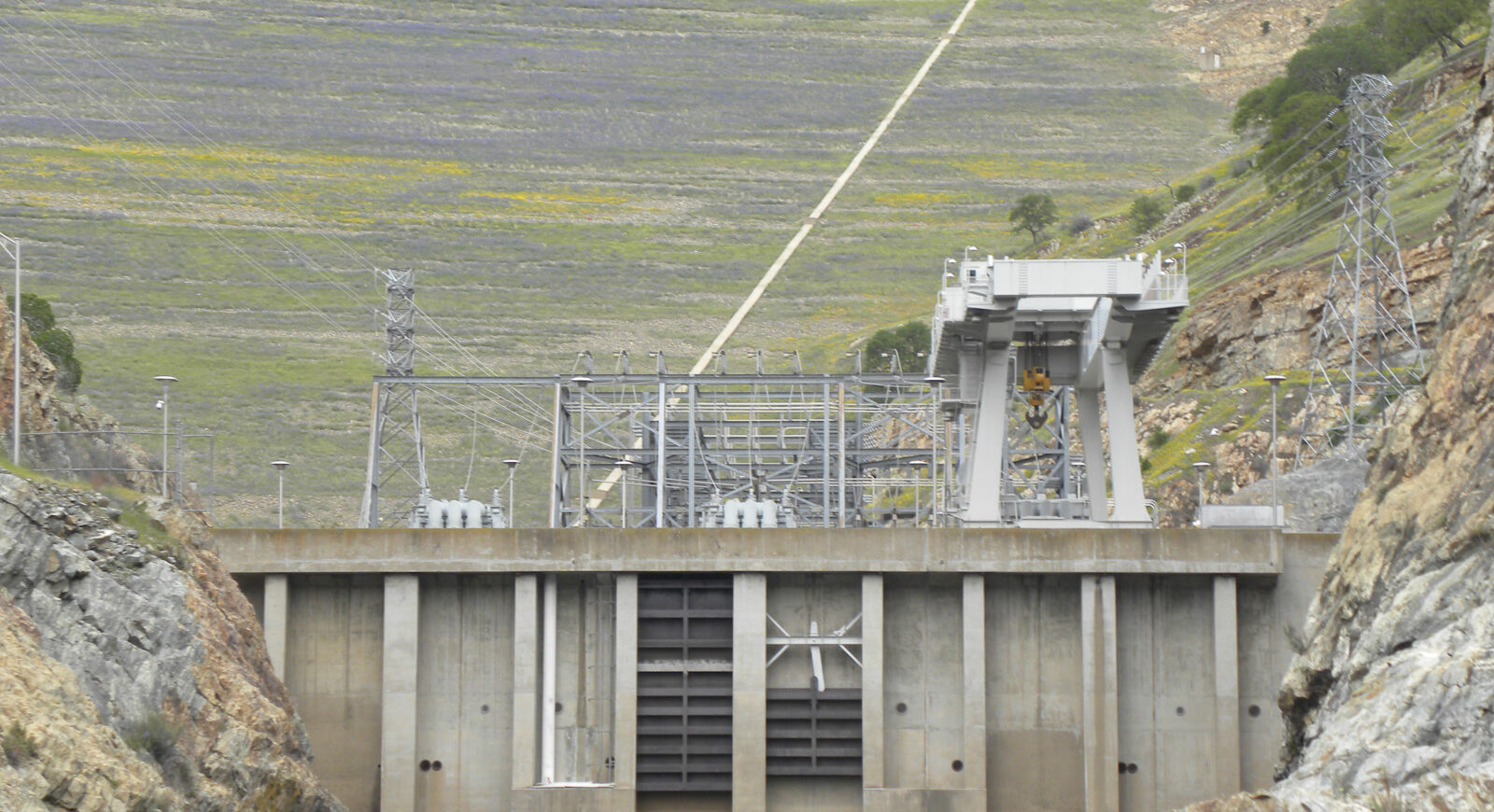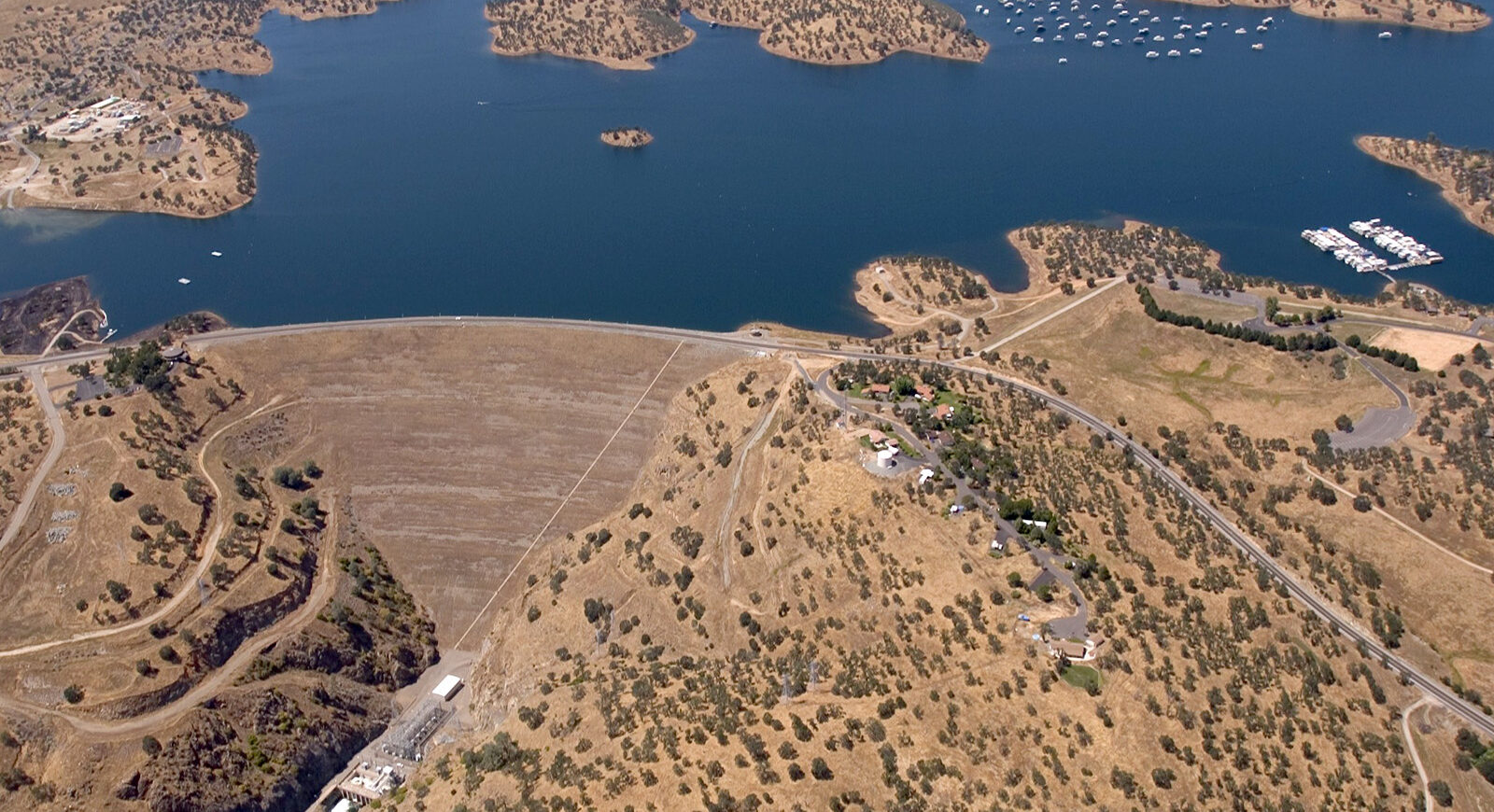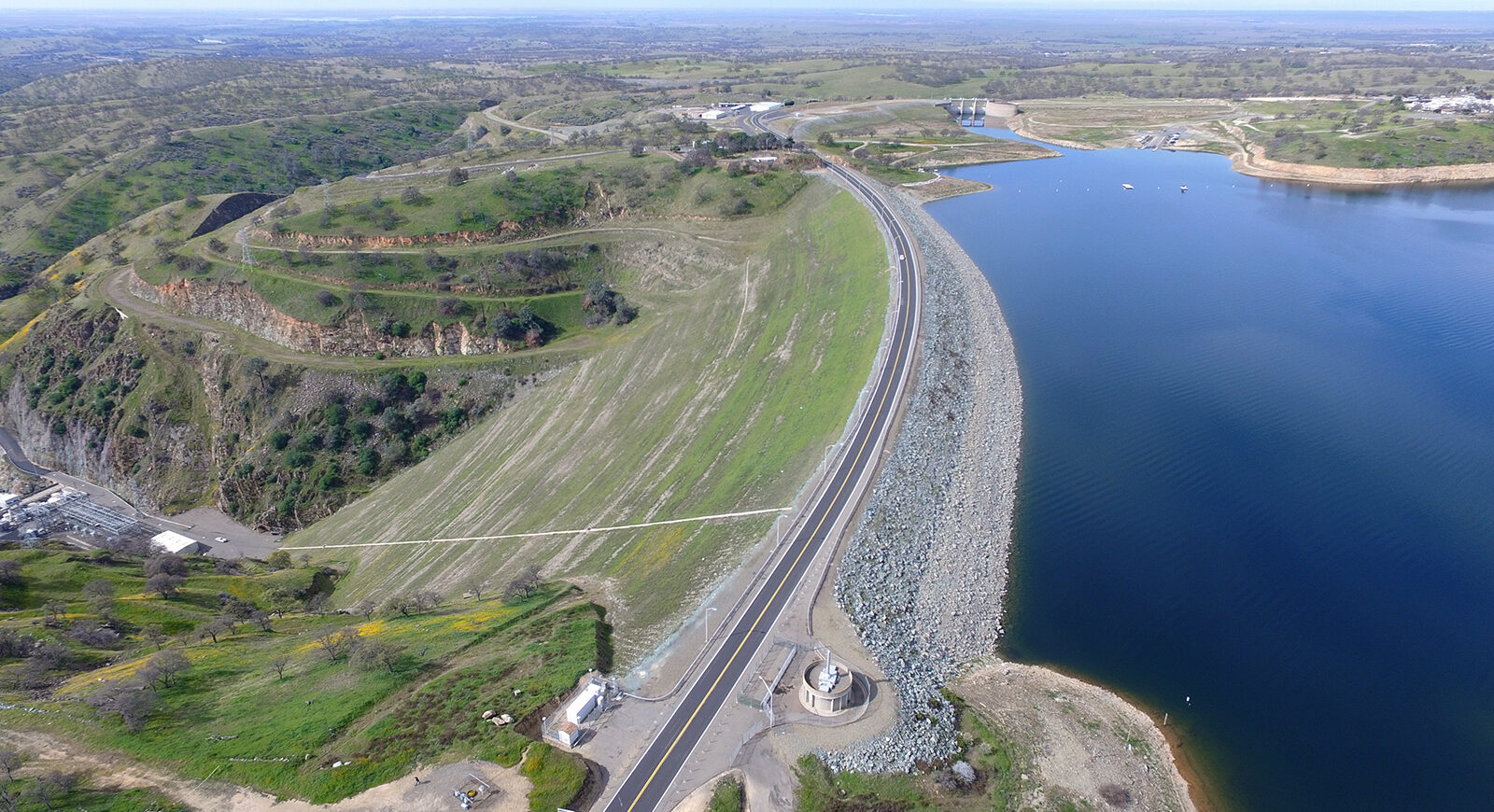Don Pedro Powerhouse
By the time the water in our system makes it to the farm, a considerable amount of it has generated clean power several times making TID’s hydropower resources an important component of our green energy portfolio.
Don Pedro Dam and Powerhouse
In 1923, Turlock and Modesto Irrigation Districts joined forces to build the first Don Pedro Dam. With a storage capacity of only 289,000 acre-feet, the dam held virtually enough water to accommodate growers’ irrigation needs for a single growing season. After numerous dry winters, the districts made the decision to replace the original dam with a much larger one in order to store water necessary to bridge multiple years of drought.
Construction on the new Don Pedro Dam began in fall 1967 and was completed in 1971 at a cost of $105 million. Built primarily for irrigation water storage, the reservoir has a capacity of 2,030,000 acre feet and has many additional benefits including power generation, flood control and recreation. By virtue of their historic sharing agreement based on acreage served within each district, TID is the majority owner and operator of the reservoir and generation facility with a 68.46 percent share while Modesto Irrigation District owns a 31.54 percent share.
In 1923, at the recommendation of TID’s first Electrical Engineer R.W. Shoemaker, and by a vote of the public, TID entered the retail power business as a publicly owned utility, selling electricity at rates far less than private companies were offering. The power plant was originally constructed with three generators and a fourth unit was added in 1989 increasing total generation to 203 megawatts of hydroelectric power with 139 MW going to TID and 64 MW to MID. TID’s portion of Don Pedro generates enough electricity to supply about 37,000 average homes.
Although large hydroelectric projects are considered a green energy source because they burn no fuel and simply use the Earth’s natural water cycle to generate electricity, they are not recognized as renewable by the State of California nor do they count towards the state mandate to achieve 50% renewable generation by 2030.




